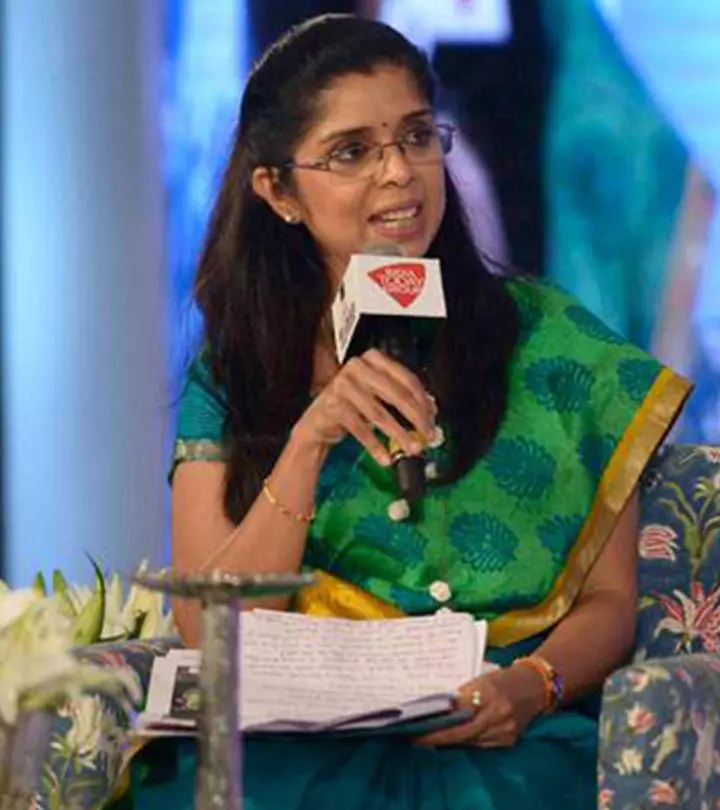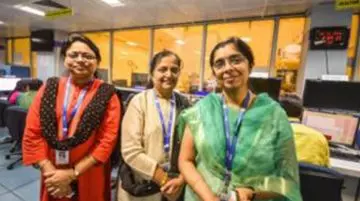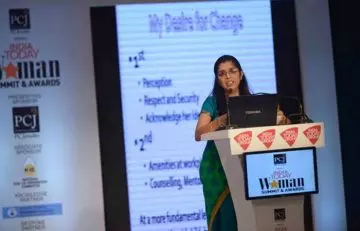Meet Nandini Harinath: The Woman Who Took India To Mars

Image: India Today
If you think about the association between women and stars in our country, sadly, it’s all about the horoscope for most of them. Among the female population of India which is around 650 million today, only a few get to cross the miles between Astrology and Astronomy. For some, the stars and the planets predict their future and for some others, the loved ones who have passed away become their guiding light. Even the educated lot of girls believe in the superstitions and for most of them, studying about the stars is light years away, just like the stars themselves. There’s always that one person who would be quick to say, “Women are not good in Math and Science”. Such people limit the potential of women to just being teachers or ordinary government employees. Before you agree to this misconception, meet Nandini Harinath, a leading scientist at the Indian Space Research Organization (ISRO), who played a key role in taking India to Mars.
Nandini Harinath, who works at ISRO’s Satellite Center in Bangalore is one of the scientists who worked in the Mangalyaan project. The satellite was successfully launched in the orbit of our neighboring planet Mars on 5th November 2013, creating a historic achievement for the country. Mangalyaan required the team of scientists that included Nandini to work day and night. Women like her prove that even rocket science (literally) is not something out of our reach.
From Star Trek To The Stars
When Nandini was young, she was a regular viewer of Star Trek, the iconic American sci-fi. Her mother was a Math teacher and her father who was an engineer also took a keen interest in the subject. Together, the family enjoyed the show but Nandini never knew that she would someday be working as a space scientist. According to her, ISRO “just happened” and it wasn’t something she planned well in advance for. It was the first job she had applied for and she managed to create history with that.”It was very important for India, not just for ISRO. It put us on a different pedestal. Foreign countries are looking at us for collaborations and the importance and attention we received was justified,” Nandini said.
The Mars Orbiter Mission (MOM) was not an easy one even for talented and hardworking scientists like Nandini Harinath. The team worked for 10 hours every day during the initial phase of the project but as the launch date approached nearer, the demand rose up to 14 hours! We can imagine how painstaking those days would have been for Nandini. According to her, they went home once in two days and often spent the day and night at the workplace. Even during the lunch breaks, the scientists rarely went home. Whatever little time they had when they were home was to be dedicated to sleep. The million-dollar project was a time-bound one and it demanded the hard work since there were many problems that had to be dealt with extreme caution.
Nandini Harinath had to balance her work with her personal life as well. During the time of the project, her daughter was preparing for the 12th-grade board exams. According to Nandini, she couldn’t have managed things without her husband’s,colleagues’, parents’, and in-laws’ help. Parents like those of Nandini’s are true role models for believing in their daughter’s abilities and not treating her any different than a son. People who think that daughters are a burden can learn a thing or two from this family.
Women In Leadership Positions
Nandini Harinath did not become the Deputy Operations Director for the Mars Orbiter Mission overnight. She worked hard for her career. The support of her family helped her reach where she is today. One of the major problems with most women is that they put a ceiling to their dreams and aspirations. Often, the reasons that might be holding them back are their family and societal expectations.
While speaking at an event in 2015, Nandini pointed out the misconceptions about women not being comfortable with Math, Science, and computing. She cited McKinsey’s study which revealed that while men were promoted on the basis of their potential, women were judged after considering their actual accomplishments. Nandini said during the event that the reason why 24 percent of the technical workforce at ISRO was constituted by women is the absence of gender bias in the organization. The number of women who seek jobs today in the field of Science and Technology is a lot higher than what it used to be, and the best part is that the numbers are constantly improving.
If you dream about becoming a scientist or a mathematician but feel discouraged because of the people around you who say that,” It’s not the job of a woman,” just think about women like Nandini Harinath. There’s nothing and nobody that can stop you from working towards your goals if you are determined, perseverant, and ready to put in the hard work it demands.
Who inspires you the most? Is your role model a woman? Have you ever thought of taking up a technical career? Let us know in the comments section below.
















